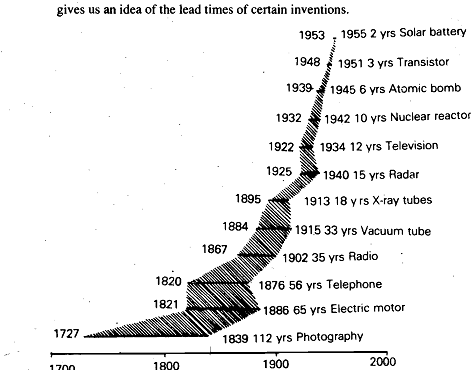Lead Times of Scientific Development:
When we compare the current status of scientific development and technological fall-out from the same, we find that the lead time of scientific discovery and its applications is much shorter in the developed countries. This is because of thelr constant efforts of research and development for technology upgradation which, unfortunately, have been lacking in our country. It is to be admitted that evy in developed countries there is a wide variation in the lead times of different discoveries.

These lead times may be quite long in certain cases and quite short in others. For example, aluminium was first obtained in pure form in 1825 and lt was only in 1886 that the process of its large scale production was finali5ed. The lead time in this case was 60 years. On the other hand, the process of hydrogenation of oil in the manufacture of vanaspati originated in 1905, and by 1911 Procter and Gamble Company, U.S.A. had placed its hydrogenated cotton seed oil, which is similar to vanaspati, on the market. As you can see, the lead time in this case was very short: only 6 years.
The lead times of scientific discovery and its applications in the field of computers have been among the shortest. One can, therefore, say that the application of any scientific . discovery relates to the needs, or compulsions of the situation. It is also a fact, that this depends, to a large extent, on the state of industrial development of the nation and the priority given by the nation to that particular area. From the This was possible as appropriate facilities were created, resources were made available, and scientific responsibility clearly given to an , organisation. On the other hand, in agricultural technology,